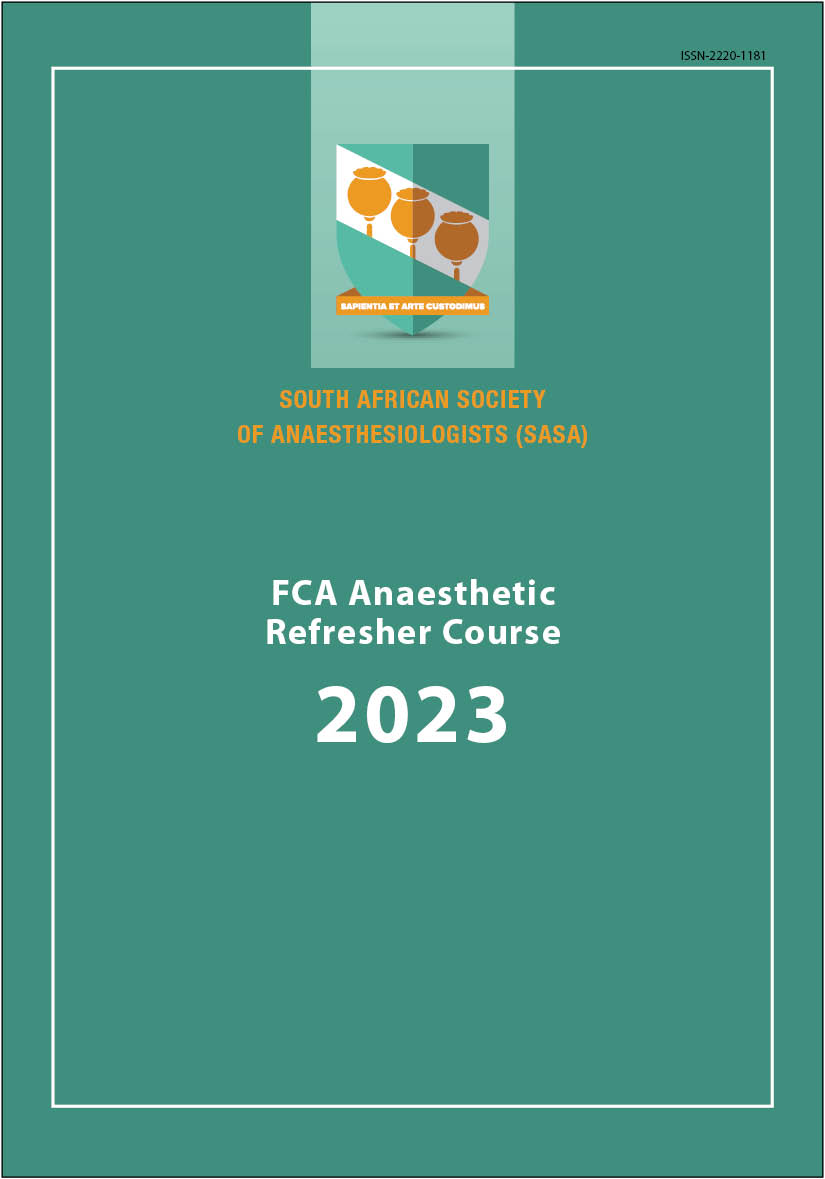Pharmacology for chemotherapy and immunosuppressants
Keywords:
pharmacology, chemotherapy, immunosupressantsAbstract
Cancer is the second leading cause of death globally and accounts for 10% of deaths in South Africa.1,2 Patients with a history of cancer have shown increased survival with the use of treatment. Anaesthetists frequently encounter patients in all stages of cancer and cancer treatment.3
There is a global increase in solid organ transplantation. Increased survival amongst transplant recipients is observed due to improved surgical techniques and immunosuppressive therapy. Patients on immunosuppressive treatment therefore present for transplant and non-transplant related surgery.4
The majority of chemotherapy targets cancer cells during rapid division and proliferation. However, the disruption of cell division also affects normal functioning cells in organs involved and uninvolved, resulting in acute/chronic injury after exposure. By understanding the mechanisms of chemotherapy drugs on targeted cancer cells, it is possible to predict what injuries might occur in the rest of the body.3 Consequently, to understand how chemotherapy interferes with cell division, we must revisit the cell cycle.
Downloads
Published
Issue
Section
License
By submitting manuscripts to SAJAA, authors of original articles are assigning copyright to the SA Society of Anaesthesiologists. Authors may use their own work after publication without written permission, provided they acknowledge the original source. Individuals and academic institutions may freely copy and distribute articles published in SAJAA for educational and research purposes without obtaining permission.
The work is licensed under a Creative Commons Attribution-Non-Commercial Works 4.0 South Africa License. The SAJAA does not hold itself responsible for statements made by the authors.

